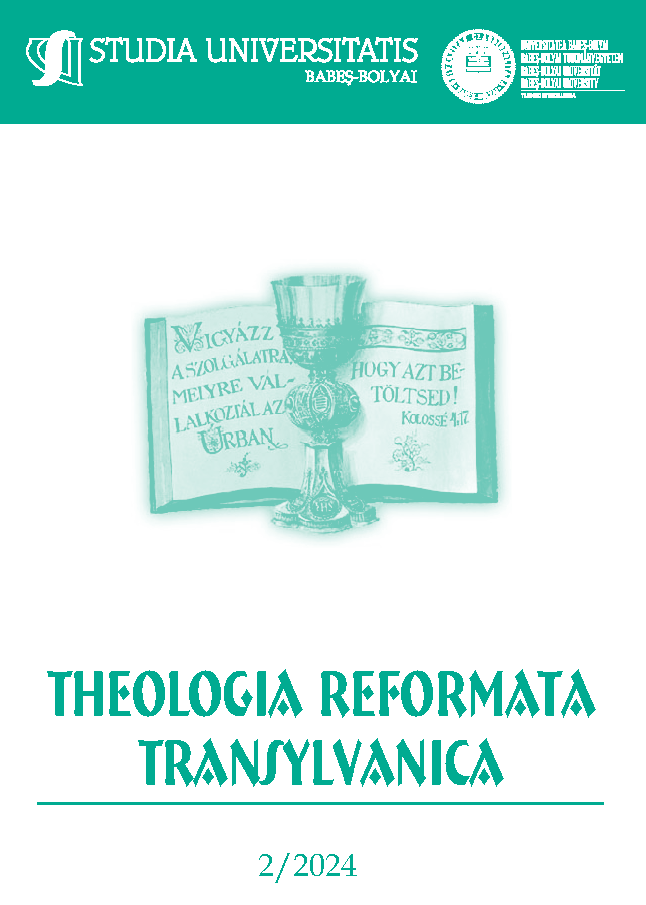Some Considerations on the Apostolic Visit to the Transylvanian Territories Annexed by Hungary – 1942
DOI:
https://doi.org/10.24193/subbtref.69.2.08Keywords:
apostolic visitor, State Secretariat, Congregation for the Eastern Churches, Romanian Greek Catholic Church, change of riteAbstract
The Vienna Diktat of 30 August 1940 strained the relationship between the Holy See and the Romanian Greek Catholic Church. The Church’s canonical territory was divided between two states, Romania and Hungary, making governance by Archbishop and Metropolitan Alexandru Nicolescu nearly impossible. The new administrative-territorial configuration effectively displaced almost entirely three of the five eparchies: Oradea Mare, Cluj-Gherla, Maramureș, and part of Alba Iulia and Făgăraș, placing them under the jurisdiction of the church leadership in Blaj.
The Holy See’s decision in 1942 to send an apostolic visitor to the Transylvanian territories under Hungarian rule was intended to ascertain the true situation and demonstrated the ongoing concern of the Romanian governing bodies – the State Secretariat and the Congregation for the Eastern Churches – for defending the interests of the Romanian Church United with Rome in these territories.
The reports of Bishop Saverio Ritter, Apostolic Visitor in Transylvania, compiled following his visit between July and September 1942, offer intriguing insights into the three eparchies that came under Hungarian rule. These observations can help us avoid a politicized and ideologically driven interpretation of this period in history.
References
Archival Documents
Archivio della Sacra Congregazione per la Chiesa Orientale:
Protocol 507/1941 Fond Romeni, Locus Affari Generali, Res Visita Apostolica ai territori transilvani passati all’Ungheria [Apostolic Visit Report on Transylvanian Territories Passed to Hungary]. Fascicul I.
Protocol 507/1941 Fond Romeni, Locus Affari Generali, Res Visita Apostolica ai territori transilvani passati all’Ungheria [Apostolic Visit Report on Transylvanian Territories Passed to Hungary]. Fascicul II.
Books
BUCUR, Ioan-Marius. (2003a): Din istoria Bisericii Greco-Catolice Române (1918–1953) [From the History of the Romanian Greek Catholic Church]. Cluj-Napoca, Editura Accent.
BUCUR, Ioan-Marius et al. (2003b): România–Vatican. Relații diplomatice, vol. 1, 1920–1950 [Romania–Vatican, Diplomatic Relations]. Bucharest, Editura Enciclopedică.
PUȘCAȘ, Vasile. (2020): Dictatul de la Viena, Transilvania și relațiile româno-ungare, 1940–1944 [The Diktat of Vienna, Transylvania and the Romanian–Hungarian Relationships]. Cluj-Napoca, Editura Școala Ardeleană.
Online Resources
Il Visitatore Apostolico quale strumento per la cura pastorale degli orientali in diaspora: prospettive future | Federico Marti – Academia.edu [The Apostolic Visitor as an Instrument for the Pastoral Care of Eastern Christians in the Diaspora: Future Perspectives | Federico Marti – Academia.edu] (accessed on: 10 October 2022).
Downloads
Published
How to Cite
Issue
Section
License
Copyright (c) 2024 Studia Universitatis Babeș-Bolyai Theologia Reformata Transylvanica

This work is licensed under a Creative Commons Attribution-NonCommercial-NoDerivatives 4.0 International License.



